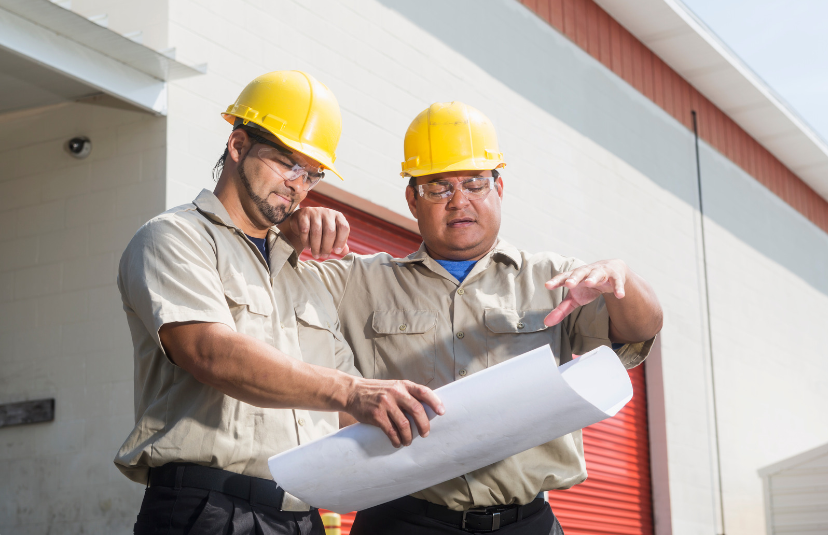Modern surveying companies operate at the forefront of technological innovation, employing diverse cutting-edge tools and techniques to redefine the landscape of land surveying. In an era where precision, efficiency, and reliability are paramount, chartered surveyors leverage advanced technologies to deliver unparalleled results to their clients. This comprehensive exploration delves deep into the intricate world of modern surveying technologies, shedding light on the innovative solutions reshaping the industry.
High-Precision GPS Systems: Revolutionizing Location Accuracy
High-precision GPS systems have revolutionized the way chartered surveyors approach land surveying tasks. These advanced systems utilize a network of satellites to provide precise positioning information, allowing surveyors to accurately determine the coordinates of points on the Earth's surface. By harnessing the power of GPS technology, surveying companies can eliminate the need for manual measurements and significantly reduce surveying time. Whether conducting boundary surveys, topographic mapping, or construction layout projects, chartered surveyors rely on high-precision GPS systems to achieve unparalleled accuracy and efficiency.
LiDAR Technology: Capturing the World in 3D
LiDAR (Light Detection and Ranging) technology has emerged as a cornerstone of modern surveying practices, offering chartered surveyors a powerful tool for capturing highly detailed 3D representations of terrain, structures, and vegetation. LiDAR systems can generate precise elevation models and intricate point clouds of the surveyed area by emitting laser pulses and measuring the time it takes to return. This wealth of data enables surveyors to conduct detailed analyses, identify potential hazards, and plan infrastructure projects with unprecedented accuracy. From urban planning and environmental monitoring to archaeological surveys and forestry management, LiDAR technology has countless applications across various industries, making it an indispensable asset for chartered surveyors worldwide.
UAVs and Aerial Surveying: Unlocking New Perspectives from Above
Uncrewed Aerial Vehicles (UAVs), commonly called drones, have transformed the field of aerial surveying, offering chartered surveyors an efficient and cost-effective means of capturing aerial imagery and collecting geospatial data. With high-resolution cameras, LiDAR sensors, and GPS receivers, drones can capture detailed aerial photographs and create accurate 3D models of the surveyed area. This aerial perspective gives chartered surveyors valuable insights into site conditions, allowing them to identify potential challenges and make informed decisions throughout the project lifecycle. Whether mapping large-scale construction sites, monitoring environmental changes, or conducting property inspections, UAVs have become indispensable tools for chartered surveyors seeking to streamline operations and deliver superior client results.
Robotic Total Stations: Automating Surveying Operations
Robotic Total Stations represent the pinnacle of surveying instrumentation, combining the functionality of a traditional total station with robotic automation capabilities. These advanced devices allow chartered surveyors to remotely control the instrument, automatically track targets, and collect precise measurements with exceptional speed and accuracy. By eliminating manual sighting and measurement, robotic total stations enable surveying companies to streamline fieldwork operations, minimize human error, and increase productivity. Whether staking out property boundaries, setting control points, or performing construction layout tasks, chartered surveyors rely on robotic total stations to achieve reliable and consistent results in any surveying environment.
Geographic Information Systems (GIS): Harnessing the Power of Spatial Data
Geographic Information Systems (GIS) are pivotal in modern surveying workflows, providing chartered surveyors with powerful tools for capturing, analyzing, and visualizing spatial data. GIS software allows surveying companies to integrate various datasets, such as land parcels, utility networks, and environmental features, to create comprehensive maps and perform spatial analysis. This spatial intelligence enables chartered surveyors to make informed decisions, optimize land use planning, and mitigate risks associated with land development projects. From site selection and infrastructure design to emergency response and natural resource management, GIS technology empowers chartered surveyors to unlock valuable insights and drive sustainable development initiatives.
Advanced-Data Processing Techniques: Extracting Meaningful Insights
In addition to capturing spatial data using advanced instrumentation, chartered surveyors employ sophisticated data processing techniques to extract meaningful insights from raw survey data. Using powerful software tools and algorithms, surveying companies can process, analyze, and interpret vast amounts of survey data with unparalleled efficiency and accuracy. Whether generating detailed topographic maps, detecting subtle changes in land elevation, or modelling complex terrain features, these data processing techniques enable chartered surveyors to deliver comprehensive insights to their clients. By leveraging advanced data processing capabilities, surveying companies can optimize project workflows, streamline decision-making processes, and provide superior results that exceed client expectations.
Conclusion
The adoption of advanced technologies has propelled the field of land surveying into a new era of innovation and opportunity. From high-precision GPS systems and LiDAR technology to UAVs, robotic total stations, GIS, and advanced data processing techniques, chartered surveyors have access to diverse tools and methods that empower them to tackle complex surveying challenges confidently and precisely. By embracing innovation and staying abreast of the latest advancements in surveying technology, chartered surveyors can continue to deliver exceptional results and maintain their position as trusted advisors in the built environment. As technology continues to evolve, chartered surveyors must remain vigilant, adaptable, and forward-thinking, ensuring that they are well-positioned to meet the changing needs of their clients and navigate the challenges of tomorrow's surveying landscape.





Comments